Histograms require some statistical knowledge to grasp, and without the tidbits, the distribution chart looks like any other bar chart. So much more though. They can show a lot about your data, and statisticians start nearly every analysis with at least one. Aran Lunzer and Amelia McNamara provide a visual essay to explain how they work, so that you too can reap the rewards.
-
Shazam is a service with an app that lets you point your phone towards some music to identify the name and artist of a song. For a hack day, Umar Hansa mapped a billion recognitions. Some of the maps color-code recognitions by iPhone and Android use which is kind of interesting.
Hansa used Eric Fischer’s datamaps, in case you’re interested in making your own.
-
Want to increase the GDP? Easy. Let more immigrants in. Lena Groeger for ProPublica:
In an analysis for ProPublica, Adam Ozimek and Mark Zandi at Moody’s Analytics, an independent economics firm, estimated that for every 1 percent increase in U.S. population made of immigrants, GDP rises 1.15 percent. So a simple way to get to Trump’s 4 percent GDP bump? Take in about 8 million net immigrants per year. To show you what that really looks like, we’ve charted the effect below. You can see for yourself what might happen to the economy if we increased immigration to the highest rates in history or dropped it to zero – and everything in between.
The interactive in the article lets you pose the what-if with various immigration rates. Give it a try.
-
Amanda Shendruk for The Pudding analyzed how genders are represented differently in comic books, focusing on “naming conventions, types of superpowers, and the composition of teams to see how male and female genders are portrayed.” The charts are good, but I’m pretty sure the animated GIFs for a handful of female characters make the piece.
-
Traditional detection algorithms use infrared heat as the main signal of a wildfire. The Firelight Detection Algorithm uses visible light instead, detecting a fire possibly a day earlier.
FILDA uses the visible light of fire, detecting high resolution images of fires. Using VIIRS technology, images of fires at night can be captured using infrared and visible light information. FILDA can also detect 90% more pixels than previous methods, and can detect smoldering and flaming fires. This allows researchers to see when fires start, when they may be dormant, or what weather events contribute to the spread of the fire.
-
Researchers attached electrodes to neurons in monkeys, showed them pictures of faces, and then reconstructed the faces reading brain waves.
After decades of work, scientists at Caltech may have finally cracked our brain’s facial recognition code. Using brain scans and direct neuron recording from macaque monkeys, the team found specialized “face patches” that respond to specific combinations of facial features.
Like dials on a music mixer, each patch is fine-tuned to a particular set of visual information, which then channel together in different combinations to form a holistic representation of every distinctive face.
There are so many ways this could be used irresponsibly, but to be honest, tech-enhanced photographic memory sounds kind of awesome.
-
How to Make Animated Line Charts in R
Sometimes it’s useful to animate the multiple lines instead of showing them all at once.
-
Using a century of data, we watch the shift of marital status in the United States.
-
Using the thermal signature, NASA provides a detailed view of the break:
The false-color image was captured by Landsat’s Thermal Infrared Sensor (TIRS). It shows the relative warmth or coolness of the landscape. Orange indicates where the surface is the warmest, most notably the mélange between the new berg and the ice shelf. Light blues and whites are the coldest areas, including the ice shelf and the iceberg.
It’s like something out of a movie.
-
This explainer video by Vox on the oil patterns on bowling lanes was oddly fascinating. The varying degrees of oil can change a professional bowler’s strategy as a tournament progresses.
I kind of want to be a professional bowler now. This whole data thing is probably a fad anyways.
-
Mimi Onuoha on the importance of paying close attention to the data collection process before making data-informed decisions:
The conceptual, practical, and ethical issues surrounding “big data” and data in general begin at the very moment of data collection. Particularly when the data concern people, not enough attention is paid to the realities entangled within that significant moment and spreading out from it.
I try to do some disentangling here, through five theses around data collection — points that are worth remembering, communicating, thinking about, dwelling on, and keeping in mind, if you have anything to do with data on a daily basis (read: all of us) and want to do data responsibly.
Garbage in, garbage out, as they say.
-
A giant iceberg broke off from Antartica. Like, really big. Quartz collected the comparisons made in various countries to make the numbers more relatable to readers.
As news traveled around the world that one of the largest icebergs ever observed had finally broken off from Antarctica, reporters were faced with a question of scale. Few among us can visualize just how large a 2,200 square-mile (5,698 square-kilometer) hunk of ice really is, so they had to come up with a reference their readers might recognize.
In the United States, the iceberg was the size of Delaware. In Spain, it was 10 Madrids. In India, it was one and a half times the size of Goa. Big.
Although, being from the U.S., I have to admit “the size of Delaware” still doesn’t do much for me. A quick look at Google Maps… it takes about two hours to drive the full length of the state. Okay, I think I got it.
Update: You can also overlay the iceberg on a map in an area of your choosing using Xaquín’s interactive.
-
The American Time Use Survey asks people what they do during the day. Activities are split into categories. One of those is sports and leisure, which is further broken down into more specific things like biking and basketball. Henrik Lindberg charted the relative peak times for these subcategories using overlaid area charts.
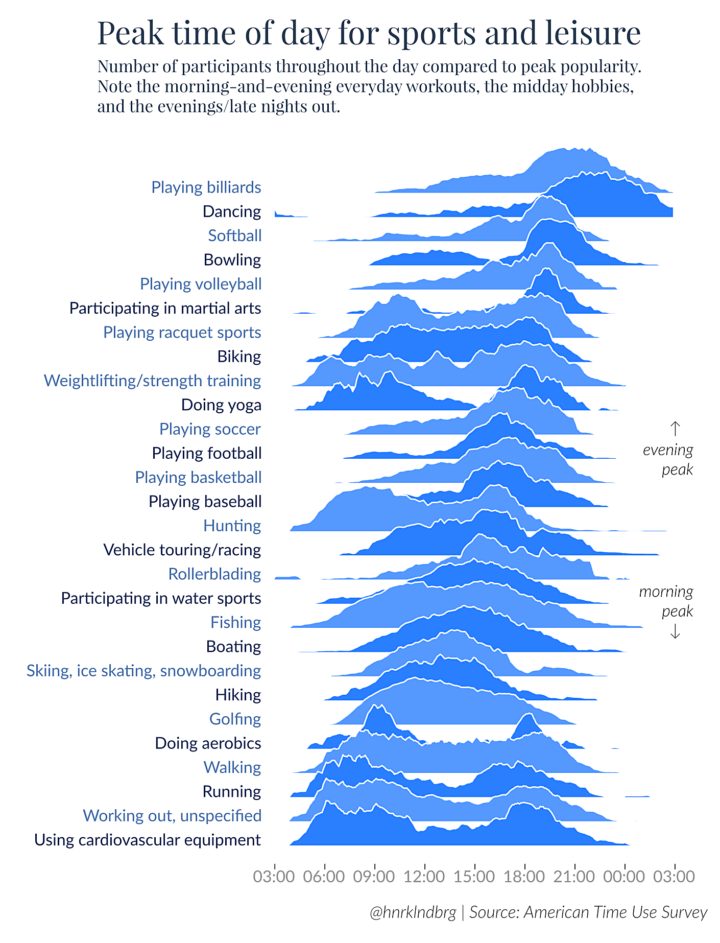
Fun.
Lindberg made it in R, and you can grab the data and code here.
-
The continental United States gets a total solar eclipse on August 21, so Denise Lu for The Washington Post mapped out every total solar eclipse that will happen in your lifetime. Enter the year you were born and see the paths on the globe.
-
As you probably know, Twitter (and all social media) collects data about you and infers your likes, dislikes, wants, dreams, hopes, etc. Sam Lavigne set up a scraper to find out all the user segments, ranging from “buyers of cheese” to “households with people who have recently moved into a new home.” It can get pretty detailed. Lavigne then used this data to automatically generate an infinite ad campaign, on what else, Twitter.
Using this list I wrote a program, “The Infinite Campaign”, that automatically generates and posts an infinite series of video ad campaigns. The script randomly selects two behavior categories and one interest category from the ad creation page. It rephrases the descriptions of the categories, putting the statements in the second person. The Infinite Campaign then overlays those statements on top of automatically selected stock footage. Finally, it logs me in to Twitter, uploads the video, and auto-generates a new ad campaign, targeting the same behavior and interest categories used to generate the video.
The data is available for download, which includes the size of user segment and the data brokers involved.
By the way, you can opt out of some of the tracking in the privacy section of your Twitter settings. Obviously that doesn’t stop others from tracking you, but at least it’s something.
-
Mean, median, and mode. These are the first things you learn about in…
-
Chris Wilson for Time has a fun piece up that tests how well you can draw the states. The quiz asks you to draw the states, and you get a grade for each sketch. Your sketched states are then placed geographically on a map so you can see how horrible you are.
-
Researchers are building models to simulate the Earth’s core. From CNRS News:
Take a journey to the center of the Earth—as far as its outer core, at least—and you’ll find a swirling mass of metal, mainly iron, kept in liquid form by the region’s intense heat. Temperature and pressure variations across this layer cause the melted metal to rise in hotter zones and to sink in cooler ones—convection movements that generate electric currents through the metal, and in turn, magnetic fields. Pair these convective motions with the Earth’s rotation on its axis and you have a large-scale dynamo effect: the spinning aligns the convective motions which now cooperate to produce one big magnetic field, ultimately creating the shield that blocks out solar wind.
I’m still not entirely sure what I’m looking at, but I like it.
-
The relationship and dynamics change. Less lust, more companionship. Is that really how it works?
-
I always enjoy the data sketches that Mona Chalabi posts on Instagram. She takes typically everyday data and sketches them or uses props to communicate the actual meaning. Check them out if you aren’t familiar. In her most recent sketch, Chalabi used fruit to compare an empty bladder and stomach to a full bladder and stomach.

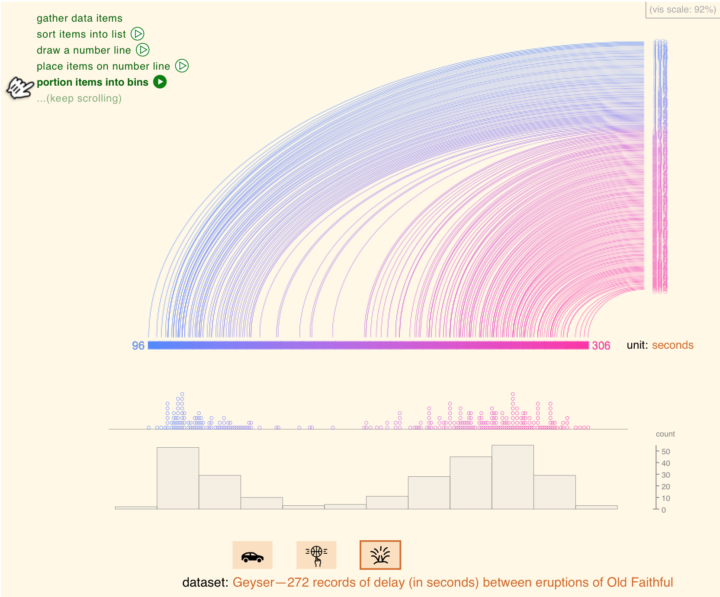
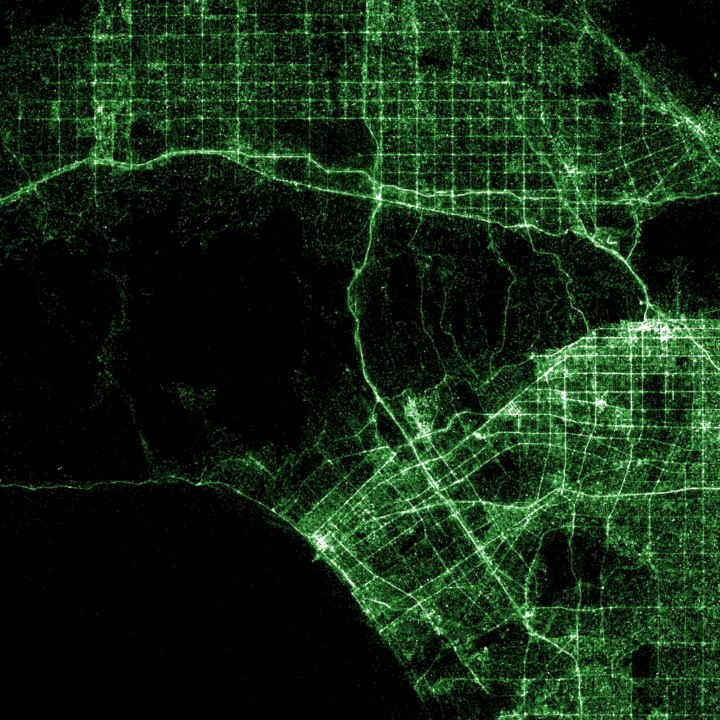
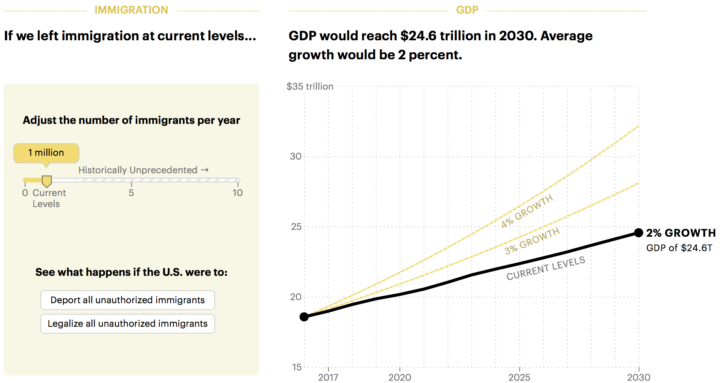
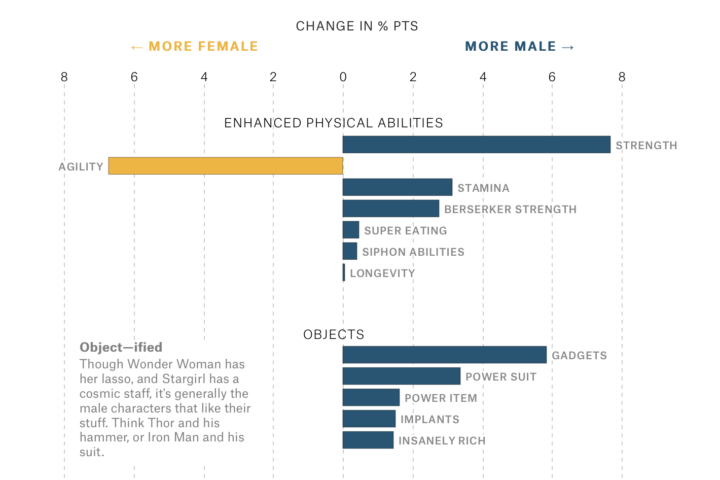
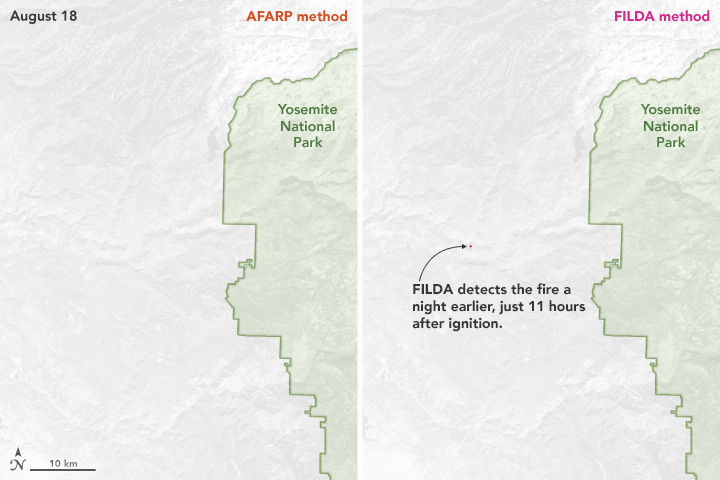
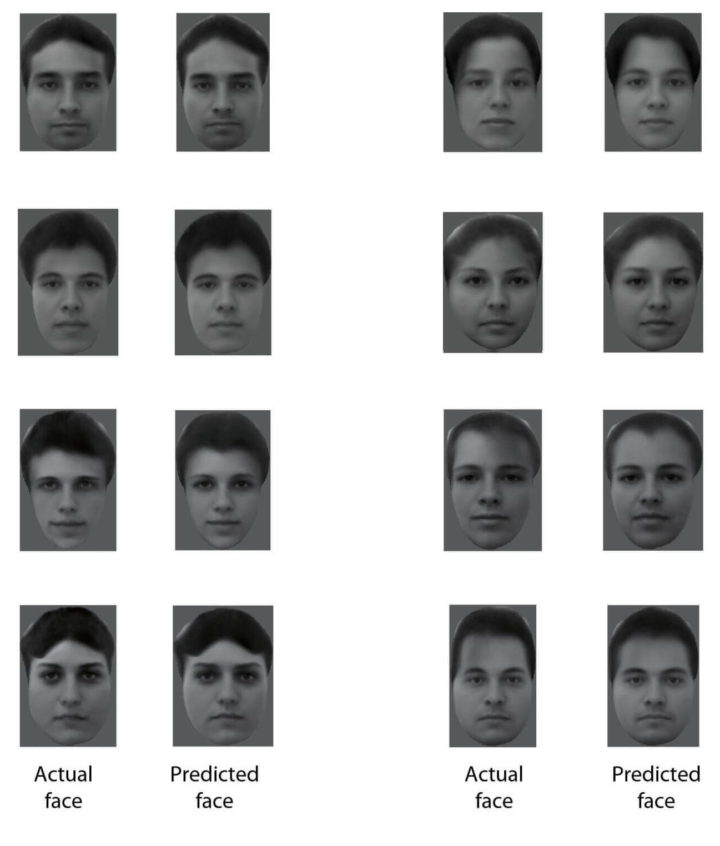
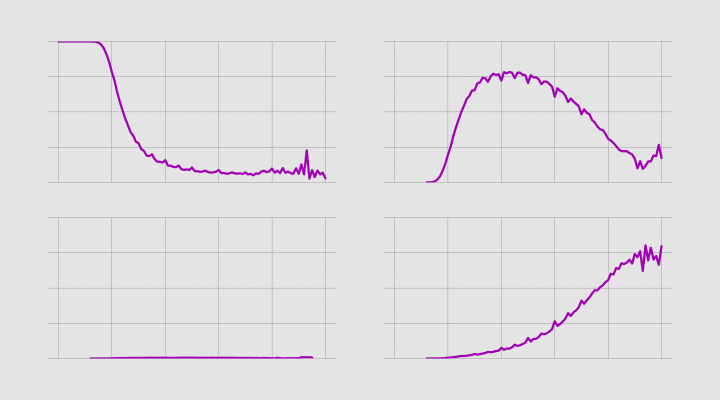
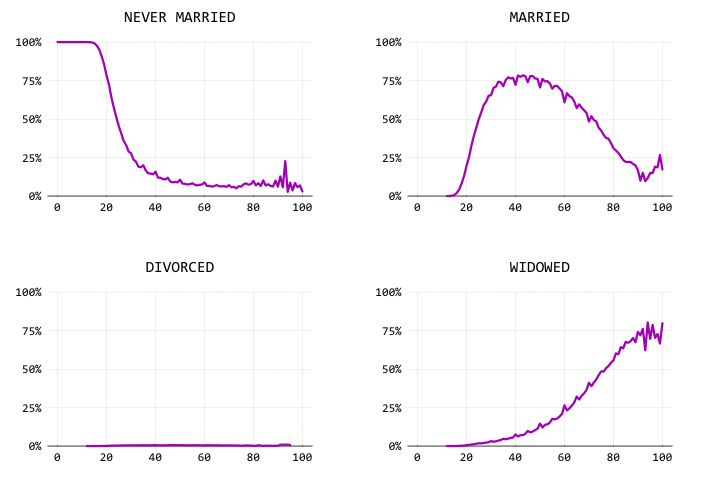
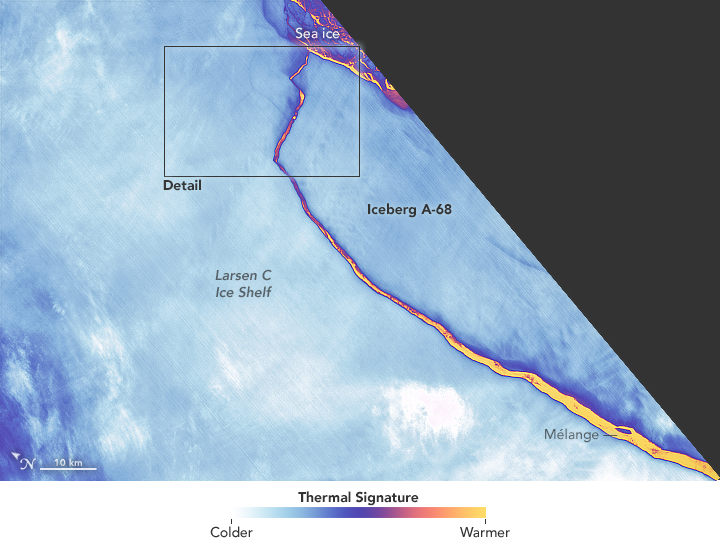
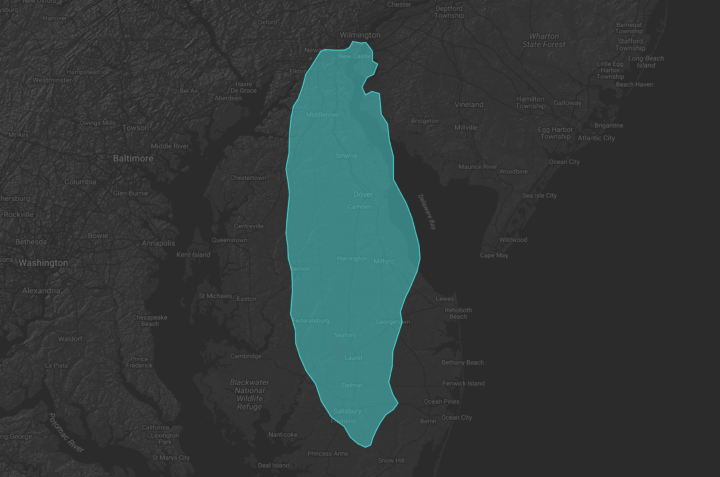
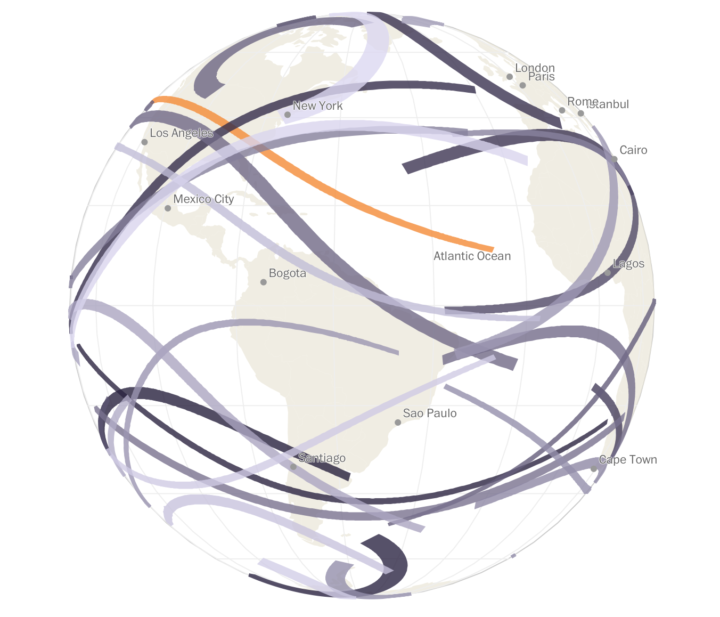

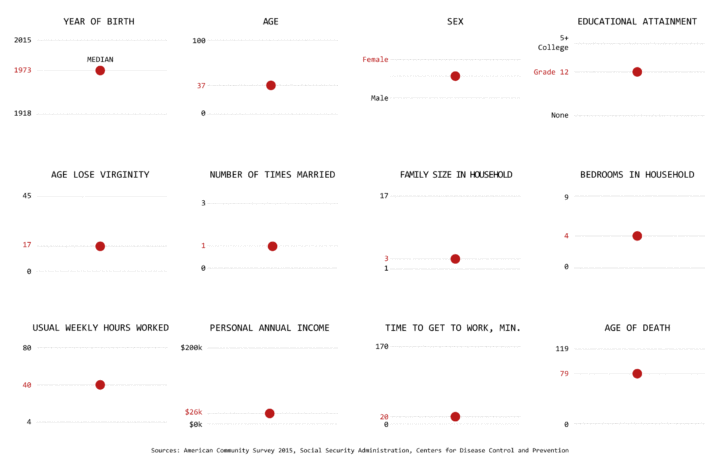


 Visualize This: The FlowingData Guide to Design, Visualization, and Statistics (2nd Edition)
Visualize This: The FlowingData Guide to Design, Visualization, and Statistics (2nd Edition)










